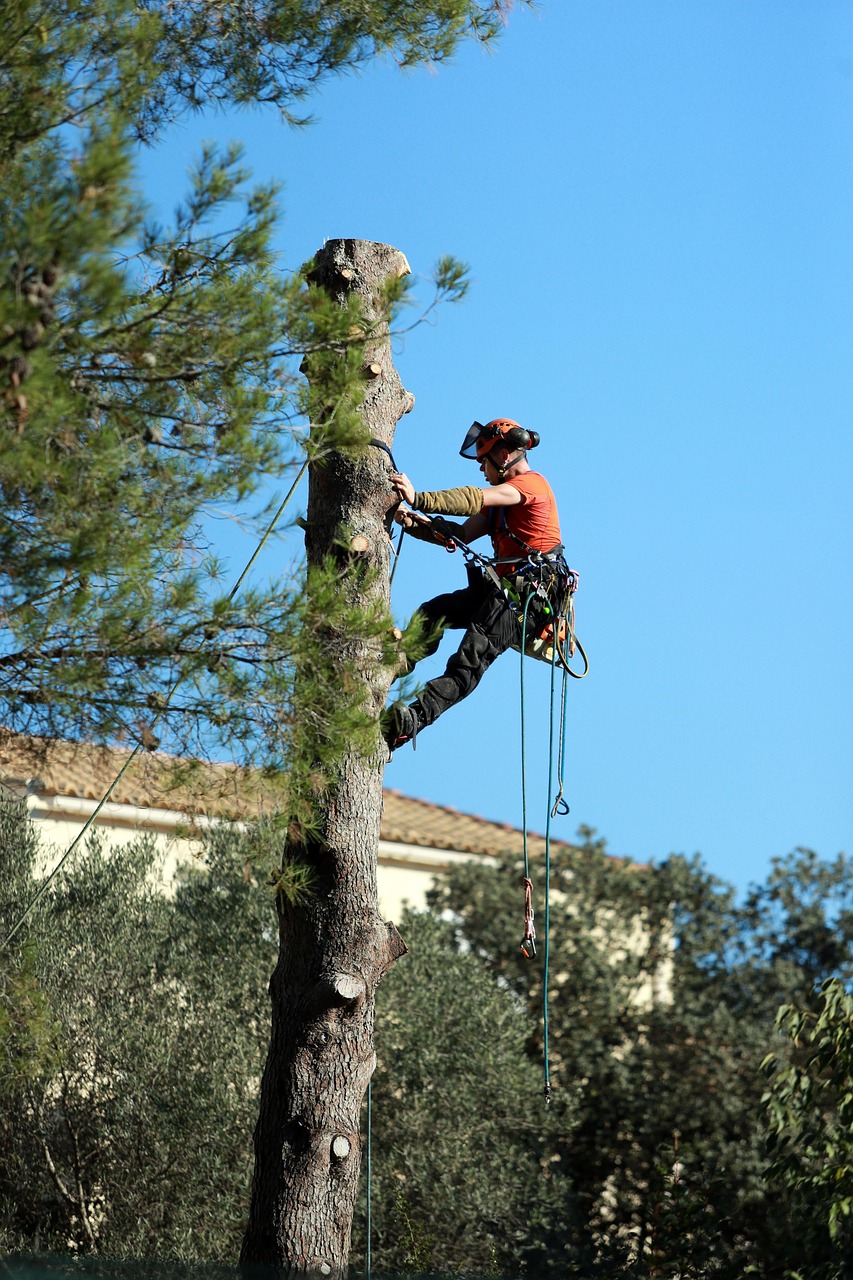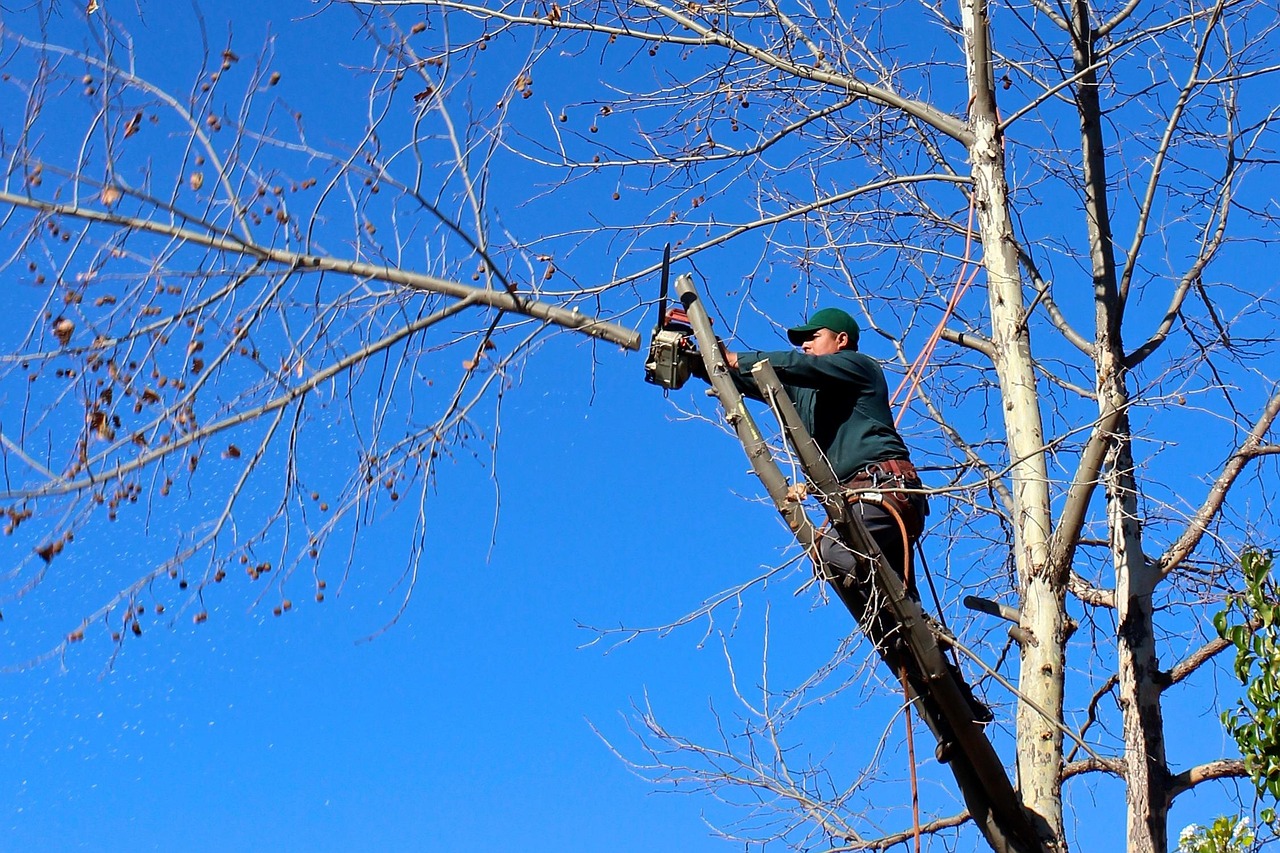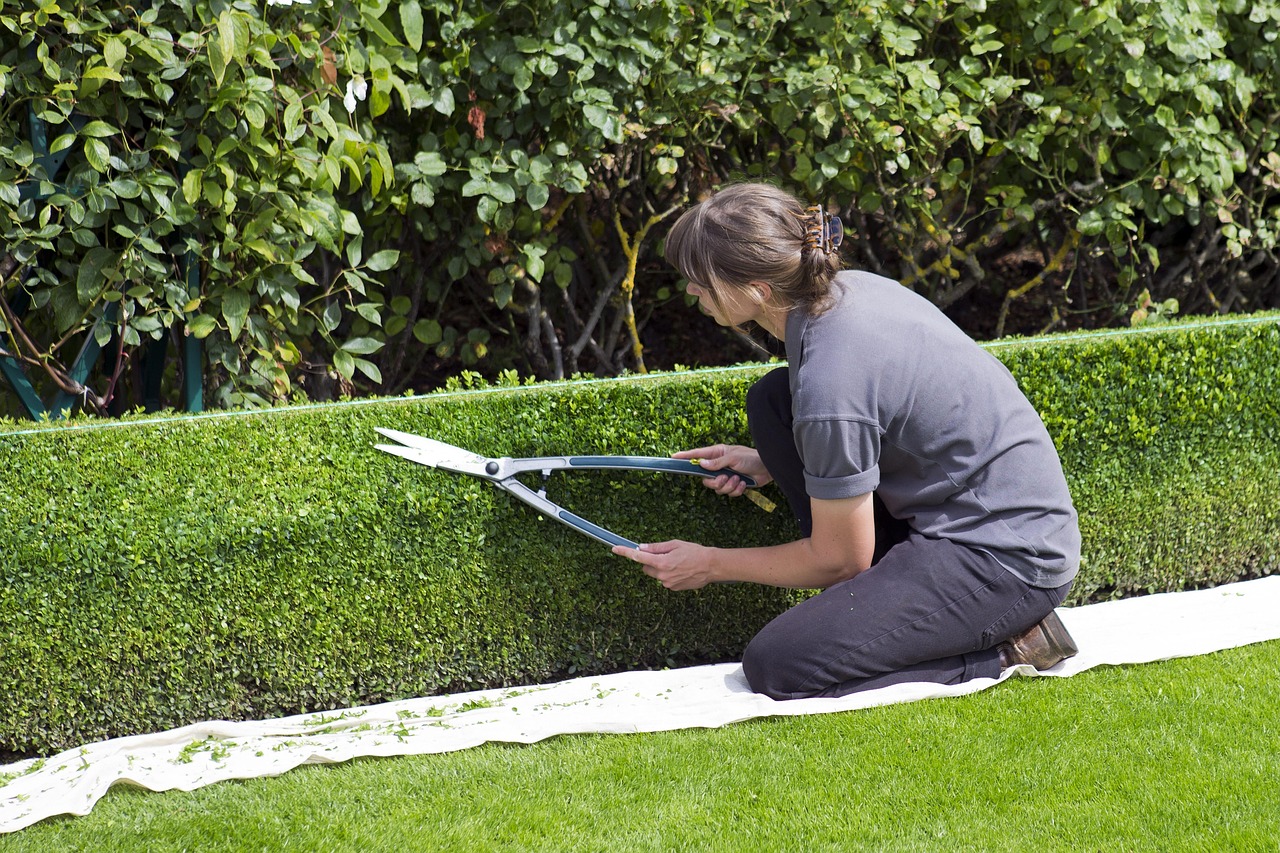Tree Trimming Services in St. Louis: What You Need to Know Before Hiring
When considering tree trimming services in St. Louis, it is essential to understand the qualifications of tree care professionals. Look for certified arborists with experience in local tree species and regulations. Additionally, compare quotes from multiple service providers to ensure you receive quality work at a fair price.
Tree trimming is a vital aspect of maintaining the health and aesthetics of your landscape. In St. Louis, where diverse tree species thrive, proper trimming techniques can significantly extend the life of trees and enhance the overall beauty of your property. Whether you have large shade trees or ornamental varieties, knowing when and how to trim them is crucial.

Professional tree trimming services not only improve the appearance of your yard but also promote tree health. Trees that are trimmed correctly can better withstand storms, resist pests, and grow healthier. In contrast, improper trimming can lead to disease, decay, and even tree loss.
As a homeowner or property manager in St. Louis, understanding what to look for in a tree trimming service is essential. The area has specific challenges due to its climate and urban environment. Therefore, hiring a knowledgeable company can make all the difference in the effectiveness of your tree care.
Key Factors to Consider
Before hiring a tree trimming service in St. Louis, consider the following factors:
- Experience and Qualifications: Ensure the company employs certified arborists who understand local trees and their needs.
- Insurance and Licensing: Verify that the company has liability insurance and the necessary licenses to operate in Missouri.
- References and Reviews: Look for customer testimonials or reviews online to gauge the quality of their work.
- Equipment and Techniques: Ask about the tools they use and their approach to trimming trees safely and effectively.
- Cost Estimates: Obtain quotes from multiple providers to compare prices and services offered.
Understanding these factors will help you make an informed decision when hiring a tree trimming service. Additionally, it is beneficial to learn about common practices in the industry.
Common Tree Trimming Practices

Tree trimming involves several techniques that are essential for maintaining tree health. Here are some common practices:
- Crown Thinning: This technique involves removing select branches to improve light penetration and air circulation.
- Crown Raising: This method focuses on removing lower branches to allow for better clearance for pedestrians and vehicles.
- Crown Reduction: This involves reducing the size of the tree’s crown while maintaining its natural shape.
- Deadwood Removal: Removing dead or dying branches helps prevent pest infestations and diseases from spreading.
The Benefits of Professional Tree Trimming

Hiring professionals for tree trimming offers numerous benefits that go beyond aesthetics. Here are some advantages:
- Safety: Certified arborists are trained to handle potentially dangerous situations, ensuring both their safety and yours.
- Healthier Trees: Professionals know how to trim trees without causing damage, promoting healthier growth.
- Time-Saving: Proper trimming can be time-consuming. Hiring experts allows you to focus on other important tasks.
- Equipment Access: Professionals have access to specialized tools that can make the job easier and more efficient.
The right tree trimming service can enhance your landscape significantly. Taking time to research and choose a reputable company ensures that your trees receive the best care possible. This step is crucial for maintaining the beauty and health of your property in St. Louis.
Understanding Local Regulations
In St. Louis, there may be specific regulations regarding tree trimming, especially if you are dealing with city-owned trees or historical trees. It is important to familiarize yourself with local laws governing tree care. Doing so will help you avoid fines and ensure compliance with municipal guidelines.
| Regulation Type | Description |
|---|---|
| City Ordinances | Regulations on trimming city-owned trees or those near public spaces. |
| Historical Designations | Special protections for trees designated as historical or significant. |
Being aware of these regulations will not only protect your investment but also contribute positively to your community’s environment.
Choosing the Right Tree Trimming Service
Selecting a tree trimming service in St. Louis can be overwhelming due to the numerous options available. To ensure you make the best decision, consider the following steps:
Research and Recommendations
Start by gathering recommendations from friends, family, or neighbors who have used tree trimming services. Personal experiences can provide valuable insight into the quality of work and customer service. Additionally, utilize online platforms to read reviews and ratings for local companies.
Interviewing Potential Companies
Once you have a shortlist of potential tree trimming services, consider reaching out for interviews. Here are some questions to ask:
- What experience do you have with tree trimming? Inquire about their specific experience with different types of trees common in St. Louis.
- Can you provide references? Request contact information for previous clients to confirm their satisfaction.
- What safety measures do you take? Understand their approach to safety, including equipment used and safety training for workers.
- What is your process for tree trimming? A reputable company should be able to explain their techniques and methods clearly.
- Do you offer a written estimate? Ensure they provide a detailed written estimate that outlines costs and services included.
Understanding Pricing Structures
The cost of tree trimming services can vary based on several factors. Understanding these factors will help you budget appropriately:
Factors Influencing Cost
- Tree Size: Larger trees typically require more time and resources to trim, which can increase costs.
- Tree Condition: Trees that are diseased or damaged may require additional care and equipment, affecting pricing.
- Accessibility: If a tree is difficult to access due to location or surrounding structures, it may result in higher labor costs.
- Seasonal Demand: Prices may fluctuate based on the time of year. Spring and summer often see higher demand for tree services.
Average Pricing Ranges
While prices can vary widely, understanding average costs can help you gauge what to expect. Below is a general overview of typical pricing for tree trimming services in St. Louis:
| Tree Height | Estimated Cost |
|---|---|
| Under 30 feet | $100 – $400 |
| 30 to 60 feet | $300 – $800 |
| Over 60 feet | $800 – $1,500+ |
Keep in mind that these figures are estimates. Always ask for a detailed quote that reflects your specific needs.
Safety Protocols and Insurance
The safety of both the workers and your property during tree trimming is paramount. Ensure that the service you hire follows industry-standard safety protocols.
Key Safety Practices
- Personal Protective Equipment (PPE): Workers should wear helmets, gloves, goggles, and other protective gear.
- Proper Equipment Use: Ensure that the company uses well-maintained equipment suitable for the job.
- Ground Safety Measures: Look for companies that establish safe zones around the work area to protect pedestrians and vehicles.
Insurance Considerations
It is crucial that the tree trimming service carries liability insurance. This coverage protects you from potential damage to your property during the trimming process. Request proof of insurance before hiring any service provider.

If accidents occur during the job, having an insured contractor avoids financial burden on your part. Additionally, check if they have workers’ compensation insurance to cover any injuries sustained by workers while on your property.
Scheduling Tree Trimming Services
Timing is an essential factor when it comes to tree trimming. The best times for trimming trees often depend on the species and local climate conditions.
Optimal Timing for Tree Trimming
- Late Winter to Early Spring: This period is often ideal for many trees as they are still dormant, reducing stress and potential damage.
- Post-Blooming Season: For flowering trees, prune after they bloom to avoid cutting off new growth.
- Avoiding Fall:</strong
Avoiding Fall
It is generally advisable to avoid trimming trees in the fall. During this time, trees are preparing for winter, and pruning can stress them. Additionally, trimming in late fall or winter can expose trees to cold weather and potential frost damage.
Signs Your Trees Need Trimming
Identifying when your trees need trimming is essential for their health and safety. Here are some signs that indicate it may be time to call a professional:
- Overgrown Branches: If branches are encroaching on your home, power lines, or other structures, trimming is necessary to prevent damage.
- Dead or Dying Branches: Look for branches that are dead, decayed, or have no leaves. Removing these can prevent disease from spreading.
- Weak Growth: Trees that exhibit weak or uneven growth may benefit from trimming to encourage a more balanced structure.
- Fungal Growth: If you notice mushrooms or fungal growth at the base of the tree or along the trunk, it may indicate internal decay that requires professional assessment.
The Tree Trimming Process
Understanding the tree trimming process can help you feel more comfortable and informed when hiring a service. Here’s an overview of what to expect:
Initial Assessment
Before any work begins, a certified arborist will perform an initial assessment of your trees. This evaluation includes:
- Species Identification: Different species have unique trimming requirements and growth patterns.
- Health Evaluation: The arborist will check for signs of disease, damage, or structural issues.
- Growth Patterns: Understanding how your tree grows helps determine the best trimming techniques.
Planning the Trim
After the assessment, the arborist will create a tailored plan for trimming. This plan typically includes:
- Goals of Trimming: Whether the goal is to improve health, aesthetics, or safety.
- Specific Techniques: The methods they will use based on the tree type and condition.
- Timeline: An estimated schedule for when the work will take place.
Execution of Trimming
During the actual trimming process, professionals will follow specific protocols to ensure safety and effectiveness:
- Preparation: Workers will set up safety barriers and equipment to protect the work area.
- Trimming Techniques: Using proper techniques such as thinning, raising, or reducing crowns depending on the plan.
- Clean-Up: After trimming, the area will be cleaned up, removing debris and ensuring your property is left tidy.
Post-Trimming Care
Once the trimming is complete, it’s important to provide proper care for your trees to ensure they recover well. Here are some tips for post-trimming care:
- Watering: Make sure to water your trees adequately, especially during dry periods. Newly trimmed trees may need extra hydration as they recover.
- Mulching: Applying mulch around the base of the tree can help retain moisture and regulate soil temperature.
- Pest Monitoring: Keep an eye out for pests or signs of disease following trimming. Early detection can prevent further issues.
- Avoid Fertilization: Do not fertilize immediately after trimming; allow the tree some time to adjust before adding nutrients.
The Importance of Regular Maintenance
Regular tree maintenance is crucial for ensuring the longevity and health of your trees. Scheduling routine trims can help prevent larger issues from developing in the future. Here are some benefits of regular maintenance:
- Enhanced Aesthetics: Well-maintained trees contribute to a more attractive landscape.
- Improved Health: Regular trimming promotes better air circulation and sunlight penetration, leading to healthier growth.
- Pest Prevention: Consistent care helps identify and address pest problems before they become severe.
- Safety Assurance: Regular trims reduce the risk of falling branches or trees that can pose hazards to people and property.
By committing to regular tree maintenance, you ensure that your landscape remains vibrant and safe throughout the years. It is important to establish a long-term relationship with a reliable tree trimming service in St. Louis for ongoing care.
Additional Services Offered by Tree Care Professionals
When considering tree trimming services, it’s beneficial to know that many tree care companies offer a range of additional services. These can enhance the overall health of your landscape and provide comprehensive care for your trees. Here are some common services you might find:
- Tree Removal: If a tree is dead, diseased, or poses a hazard, professional removal may be necessary. Tree care companies have the equipment and expertise to safely remove trees.
- Stump Grinding: After a tree is removed, the stump can be ground down to below ground level, preventing tripping hazards and allowing for replanting in the future.
- Emergency Services: Some companies offer emergency response for storm-damaged trees or fallen branches, ensuring quick and safe removal.
- Soil Testing and Amendments: Healthy trees require healthy soil. Some services may offer soil testing to determine nutrient deficiencies and recommend amendments.
- Plant Health Care: This includes regular monitoring and treatments to protect trees from pests and diseases, promoting long-term health.
By utilizing these additional services, you can ensure that your entire landscape is well-maintained and that any potential issues are addressed promptly.
Environmental Impact of Tree Care
Tree trimming and maintenance practices can have a significant positive impact on the environment. Healthy trees provide essential benefits to our ecosystem, including:
- Air Quality Improvement: Trees absorb carbon dioxide and release oxygen, contributing to cleaner air.
- Habitat for Wildlife: Well-maintained trees serve as habitats for various species, promoting biodiversity.
- Stormwater Management: Trees help manage stormwater runoff, reducing erosion and flooding in urban areas.
- Climate Regulation: Trees play a role in moderating temperatures and providing shade, which can reduce energy consumption in homes.
By investing in tree trimming services, you are not only enhancing your property but also contributing to a healthier environment for the community and future generations.
Cost-Effective Tree Care Strategies
Managing the costs associated with tree care is important for homeowners. Here are some strategies to help you maintain your trees without breaking the bank:
- Regular Maintenance: Scheduling routine trims rather than waiting for major overhauls can save money in the long run by preventing larger issues.
- Seasonal Discounts: Many tree care companies offer discounts during off-peak seasons. Inquire about seasonal promotions when planning your services.
- Loyalty Programs: Some companies have loyalty programs or packages that provide ongoing care at a reduced rate.
- DIY Preparation: While professional services are essential, you can assist by cleaning up your yard or preparing access routes before the crew arrives.
Final Thoughts
Choosing the right tree trimming service in St. Louis requires careful consideration of various factors, including experience, safety practices, and cost. Understanding the importance of regular maintenance will not only keep your trees healthy but also enhance the beauty of your landscape. By investing in professional tree care, you contribute positively to your property and the environment.
Your trees are vital assets that provide shade, beauty, and ecological benefits. Establishing a long-term relationship with a reputable tree trimming service ensures that they receive the best possible care. With the right knowledge and resources, you can maintain a vibrant outdoor space that enhances your home’s value while supporting a sustainable environment for everyone.
In conclusion, informed decisions lead to healthier trees and a more beautiful landscape. Whether you need trimming, removal, or additional services, make sure to choose a provider that aligns with your needs and values. Your trees—and your community—will thank you for it.
